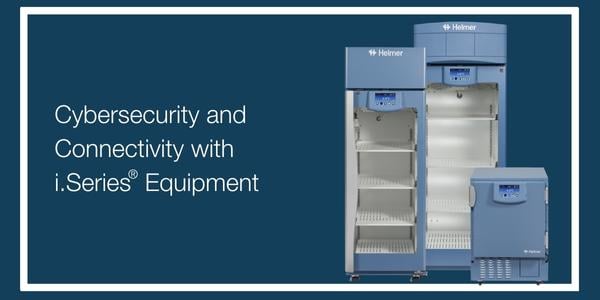i.Series® equipment manufactured by Helmer Scientific has passed cybersecurity vulnerability testing aligned with OWASP MSTG and in conformity with UL 2900-2-1 connected medical device cybersecurity standards.
Penetration testing of this type reveals system vulnerabilities cyber criminals can use to access critical systems.
Along with safe connectivity, the i.C3® Advanced Information Center provides a system status console, an interactive temperature graph, an event log and detail screen with event acknowledgement, automatic alarm testing, and data download and transfer.
The data transfer center maintains up to 10 years of historical performance data. The i.C3® controller is standard on i.Series® equipment.
According to the 2023 IBM Security X-Force Threat Intelligence Index, managing and mitigating cybersecurity risks continues to be a focus point in healthcare systems. The same report ranks the healthcare facilities as one of the top targets for cyberattacks.
Other Blogs You Might Be Interested In...
- Prevent Unauthorized Entry into Storage Devices with i.C3® Access Control
- i.Series® Features and Connectivity Enhance Pharmacy Workflows
- View the Capabilities of the i.C3® Interactive Temperature Graph
- Record Alarm Events with the i.C3® Event Log
Healthcare facilities remain primary targets for cyber criminals because the data they utilize and store contains high financial and intelligence value in a centralized location.
Why Are Hospitals Targeted?
- Valuable Data: Extremely sensitive personably identifiable data is collected and stored by healthcare facilities. This includes financial information, medical records, social security numbers, etc.
- Critical Data: The possibility that hospitals could lose access to critical patient information represents a serious risk to patient safety.
- Cost of Disruption: Healthcare facilities, especially hospitals, cannot risk disruption to their ability to care for patients. This makes them more likely to pay the ransom demands of cyber criminals.
- Connected Devices: A single facility may have more than 10,000 connected devices.
- Cybersecurity Vulnerability: Almost half of U.S.-based hospitals spend less than 6 percent of their IT budgets on cybersecurity.
In 2022, there were an average of 1,463 cyberattacks per week aimed at healthcare facilities around the world. This represents a 74 percent increase over 2021. The majority of these attacks were classified as ransomware attacks. Around 66 percent of hospitals in the United States were targeted with ransomware attacks in 2022.
Healthcare data breaches cost facilities more than $10 million per incident on average.
Responsibility for cybersecurity extends beyond the IT department. All departments that utilize connected devices are accountable for managing and maintaining cybersecurity best practices.
Preventing unauthorized access to patient and facility data promotes patient safety and reduces the legal and financial risks associated with data breaches.
Choosing equipment that meets recognized cybersecurity standards is one step in the prevention of cybersecurity threats.





